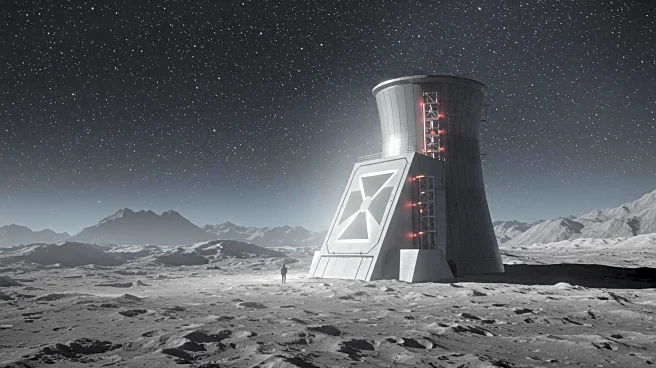Rapid Read • 9 min read
NASA, under the direction of interim head Sean Duffy, is planning to install a 100-kilowatt nuclear reactor on the moon by the end of the decade. This initiative is part of a broader effort to establish a permanent lunar settlement, which would be a significant milestone in space exploration. The plan includes returning astronauts to the moon by 2027, with regular landings expected in the early 2030s. Each mission will contribute to the construction of a small base, which will gradually expand to accommodate a few inhabitants. The base will require substantial energy, and nuclear power is deemed essential due to the moon's long nights and extreme temperatures. The project is part of NASA's Artemis program, which involves international collaboration, although Russia has opted to partner with China on a separate lunar base.
AD
The development of a nuclear-powered lunar base represents a significant advancement in space exploration and energy technology. It underscores the strategic importance of the moon in geopolitical terms, as nations vie for influence and resources in space. The initiative could lead to technological breakthroughs in nuclear energy and space habitation, potentially benefiting industries on Earth. Moreover, the project highlights the importance of international cooperation in space exploration, while also raising concerns about territorial claims and security issues on the moon. The U.S. aims to maintain its leadership in space exploration, countering efforts by other nations, particularly China, to establish a presence on the lunar surface.
NASA's plans for the lunar base will proceed with the development and testing of the nuclear reactor technology. The agency will continue to collaborate with international partners, while addressing potential geopolitical challenges. The construction of the base will involve deploying astronauts and equipment to the moon, with the first missions scheduled for 2027. As the base expands, NASA will explore additional infrastructure, such as hydroponic greenhouses and radio telescopes, to enhance scientific research and sustainability. The success of this project could pave the way for larger settlements and further exploration of the moon's resources.
The establishment of a lunar base could have profound implications for humanity's future in space. It may lead to the moon becoming a hub for scientific research, resource extraction, and potentially even military operations. The ethical and legal dimensions of lunar colonization will need to be addressed, particularly concerning the Outer Space Treaty and the potential for territorial disputes. The project also raises questions about the environmental impact of human activities on the moon and the preservation of its natural state.
AD
More Stories You Might Enjoy










